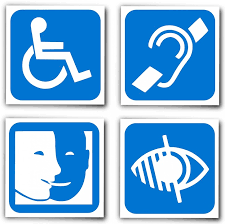Enabling Technologies for the Disabled
By EmployDiversity
The number of lawsuits disabled consumers have brought against companies tripled between 2017 and 2019. The highest-profile include a complaint a sight-impaired user brought against Domino’s Pizza. Guillermo Robles filed a claim that the company’s app inhibited accessibility for the blind under the American Disabilities Act (ADA). The federal government enacted the law in 1990 to facilitate mobility and accessibility for the disabled in public physical spaces and workplaces. While the suit failed the test in a California federal court, an appeals court sided with the plaintiff and sent it back to the district for reconsideration. In October 2019, the Supreme Court effectively upheld the lower court’s finding to uphold ADA in digital spaces.
Another high-profile suit involved a user of Winn-Dixie’s website. Winn-Dixie is a well-known supermarket chain in the southern United States. The Florida resident who brought the suit in 2017 claimed the franchise did not make the interface of its website accessible to the visually-impaired. He won the suit in mid-2017.
These suits and others are becoming incessant reminders that about 15-percent of the global population lives with a disability. In the United States, nearly the same proportion manages their lives with a variety of disabilities. Nevertheless, the Federal government has yet to update the ADA with specific standards to make digital technologies and devices accessible to disabled users. Nevertheless, some technology companies are moving ahead to create products that will aid the disabled navigate cyberspace and the physical world.
Connecting with the Digital Realm
Facebook was one of the first major digital platforms to make it possible for the visually impaired to see the photos posted to their timelines. Facebook developers used computer vision techniques to recognize images. Computer vision is a branch of Artificial Intelligence (AI) that analyzes vast data sets of images and respective descriptions to recognize images. A computer-synthesized voice then reads a description of the image to the user. Users can tag images to recognize familiar faces and places for future vocalized reference.
In mid-2019, Google rolled out an app developer’s kit that extends the same kind of Facebook-like disability-friendly functionality to the software. And Microsoft announced in the same year it had designed its Xbox Adaptive Controller to provide disabled video game players a more level playing field against opponents.
Mainstream tech companies like Google and Microsoft have hired Chief Disability Officers to ensure products their products are enabling for the disabled. They also see to it that their digital platforms provide resources for software developers to more easily adapt their software to wider audiences that include the disabled.
Connecting with the Physical Realm
A hard hat akin to a cycling safety helmet helps the visually impaired to navigate streets, recognize objects, and navigate traffic lights and crossings.
Moreover, in the future, exoskeletons may replace wheelchairs to offer greater mobility and health benefits to the disabled. During mid-2019, Lyle Fleming used an exoskeleton to walk. Six years before, Fleming had suffered a work-related injury to the spine. Since that time he had lost the ability to walk.
With a mix of fast-evolving policy and technology, the disabled may find the playing field leveled with those of us who take the full-functionality of our bodies for granted.








